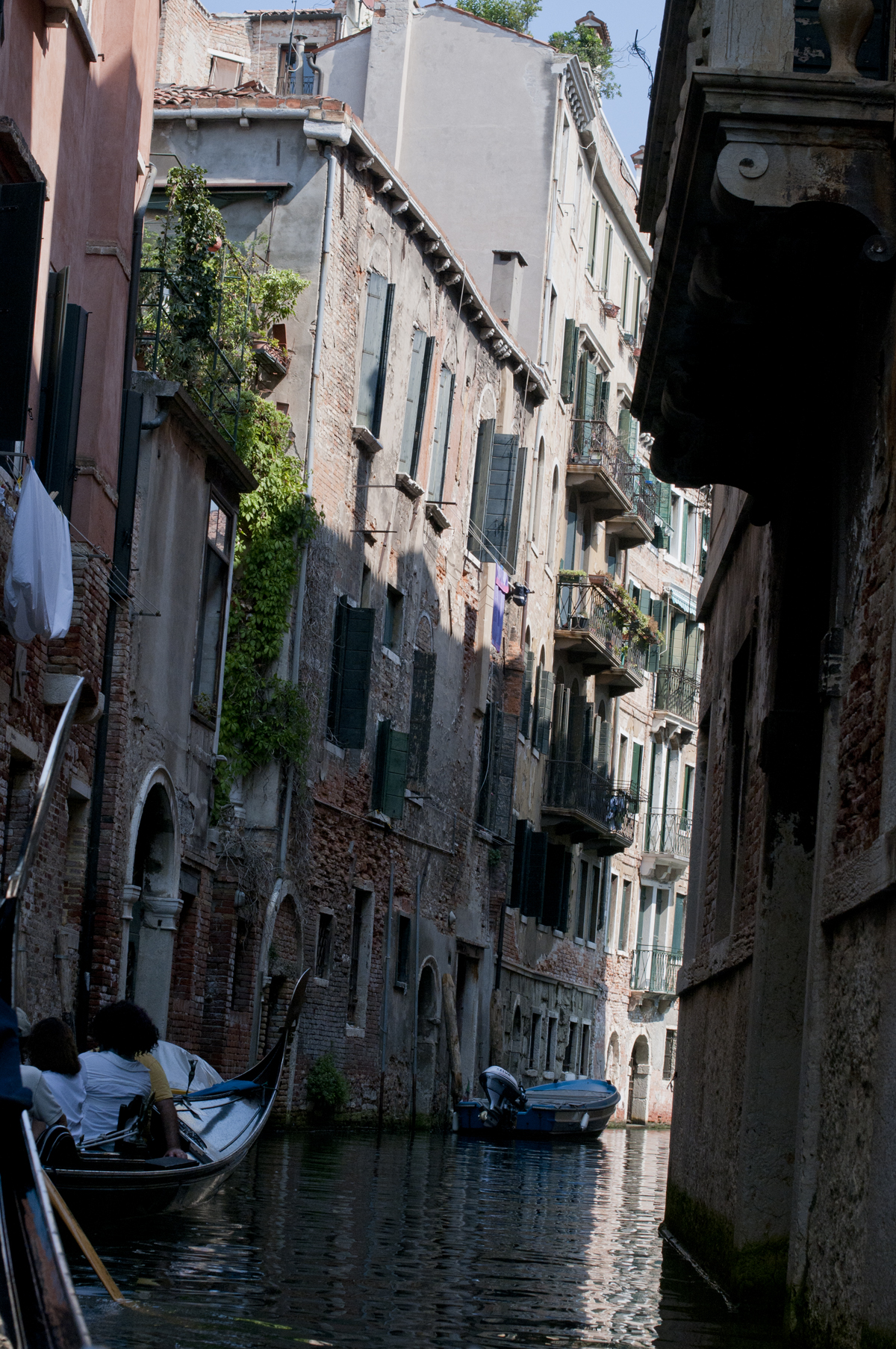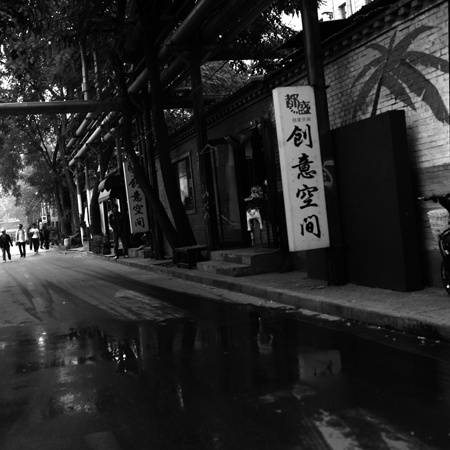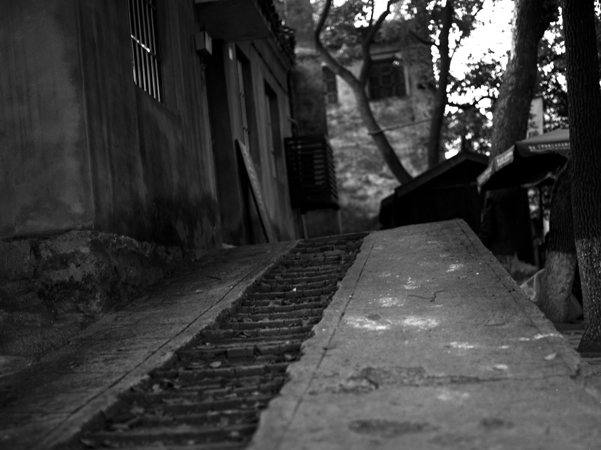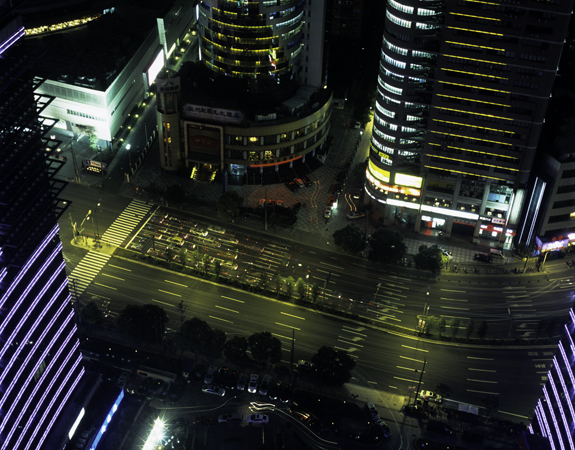This is the last picture that I took at Wawaloli Beach with the Hasselblad before watching the tripod that it was sitting on slowly crash into the rocks. This smashed the Hasselblad on its side. There was no way to advance the film or to trip the shutter. It was dead.
I went to Lighthaus Camera in Kona and the owner, Don Slocum said he would take a look at it to see if it could be fixed. The next day, he came back with bad news. Couldn’t be fixed by him and that I should try Fred and old German guy trained by Hasselblad and now working out of Mountain View, CA.
It is on this day that I inquired about a Fuji medium format range finder. There was none on the Big Island, but Don was going to Honolulu and that he would check there and call me. On the very next day, Don called and said that he had a Fuji GW670. This is a 6x7 cm camera and would use the medium format film that I brought on this trip. I asked if he could bring it back to Kona so that I could see it. The next day, I looked at the camera and bought it. Ran back to the condo and loaded film, then started putting on the tripod plate. Here is where it gets interesting. The plate didn’t fit. Took it back and said I can’t use it if it won’t fit on the tripod. We looked at the tripod plate and it seemed that there was an adapter in it, but we were unable to get it off. Camera returned. Went back to the condo and thought, “You num-nut. You just need needle nose pliers and the allen wrench” Next, I proceeded to the Home Depot in Kona. Went to a salesman and asked where the smallest needle nose pliers were. He guided me and said, “Do you have to do this a lot of times of just once?” I said, “Just this once.” The sales guy goes, “Let’s do this right now.” So, I grabbed the 3/8” sleeve with the pliers, stuck the allen wrench in and cranked. The adapter sleeve came off. It turns out the Hasselblad camera were set up to fit 3/8” tripod hole and the adapter was inside to fit ¼” holes for all other cameras. On the same day, I went back and bought the camera back. The next morning, I went back to Wawaloli and to this shot.
Two days later, we went to Honolulu. I took a number of shots. The first roll came out of the Fuji un-raveled. I thought I may have done something wrong so I tried another roll. The same result. So I email Don and he said he would be in Honolulu the next day and he would look at it. In my mind, I though I had to return it again. However, when we tried it in the store, the rolls came out fine. The next day we went to Haleiwa with friends and I took out the Fuji to shoot. Below are the results. The Fuji GW 670 has a great lens. It is a little funky to use, but once you get use to it, its all good.
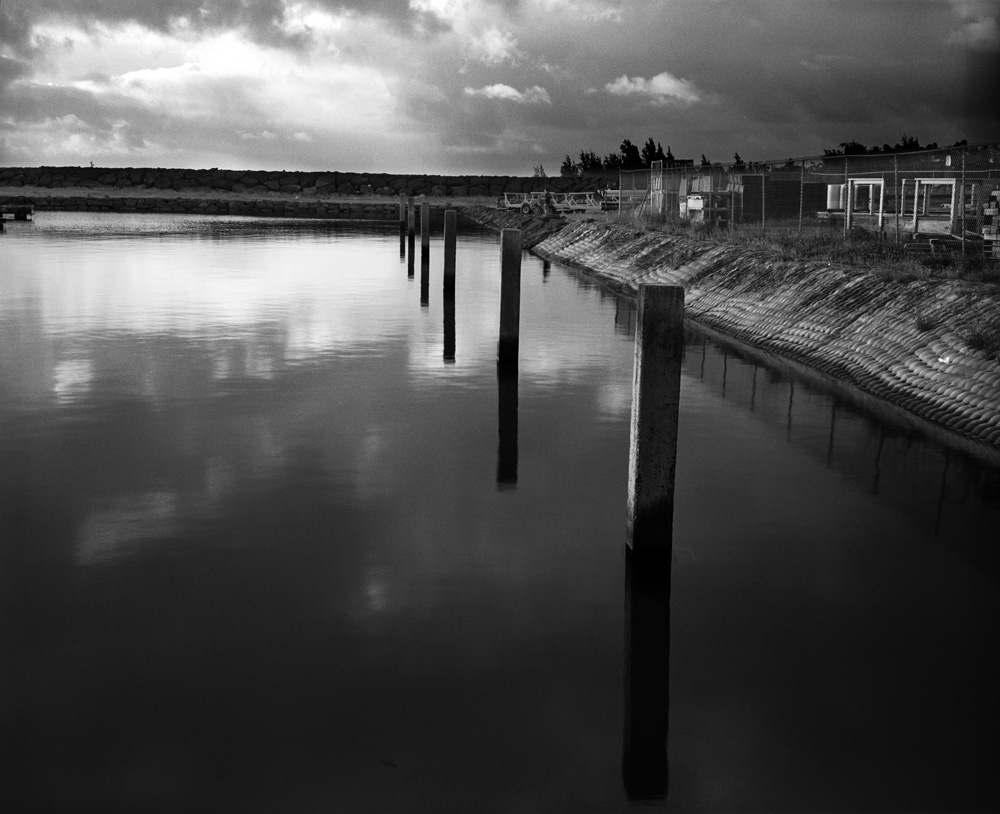

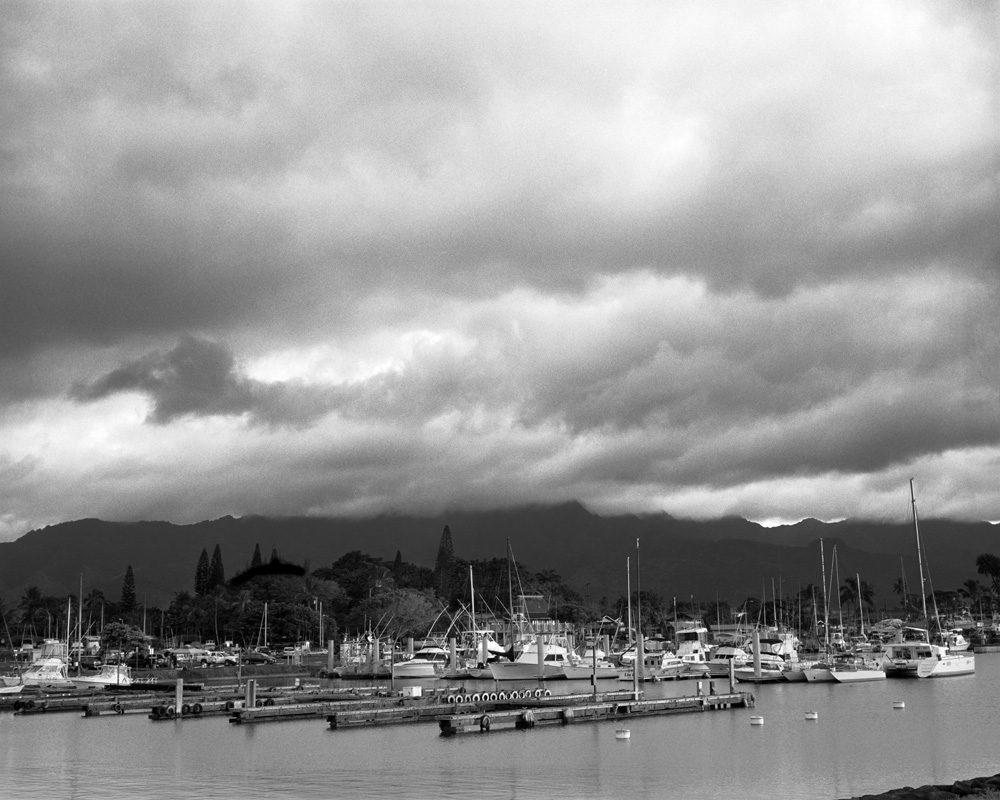
The story continues when we get back to the Mainland. I take the Hasselblad body to Fred in Mountain View to see if he could fix it. He looked at it and said it will need a major overhaul and he would let me know. One month later, Fred called and said, “Wilton (Fred pronounces Vilton), I have bad news for you. It can’t be fixed. The housing is smashed in. You can find another at KEH.com” So I went on KEH.com and found a replacement body for the Hasselblad and today it arrived. Yahoo! It is in great shape and the camera is whole again. Some say that I went through all this so I could get the Fuji. I’ll never say…..





